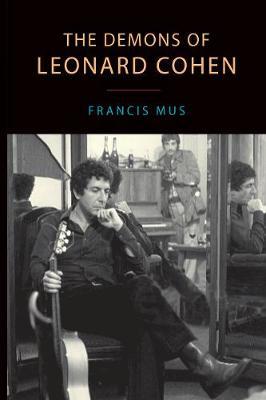The Demons of Leonard Cohen

The Demons of Leonard Cohen
"With my jingle in your brain,
Allow the Bridge to arch again"How are we to understand Leonard Cohen's plea? Who speaks to whom in this oeuvre spanning six decades? In search of an answer to this question this study considers the different guises or "demons" that the Canadian singer-songwriter adopts. The countless roles assumed by Cohen's personas are not some innocent game, but strategies in response to the sometimes conflicting demands of a "life in art" they serve as masks that represent the performer's face and state of mind in a heightened yet detached way. In and around the artistic work they are embodied by different guises and demons: image (the poser), artistry (the writer and singer), alienation (the stranger and the confidant), religion (the worshipper, prophet, and priest), and power (the powerful and powerless). Ultimately, Cohen's artistic practice can be read as an attempt at forging interpersonal contact. The wide international circulation of Cohen's work has resulted in a partial severing with the context of its creation. Much of it has filtered through the public image forged by the artist and his critics in concerts, interviews, and reflective texts. Less a biography than a reception study--supplemented with extensive archival research, unpublished documents, and interviews with colleagues and privileged witnesses--it sheds new light on the dynamic of a comprehensive body of work spanning a period of sixty years.
Who speaks in Leonard Cohen's oeuvre? By identifying the many guises in which Cohen presents himself to his audience, Francis Mus seeks to formulate an answer to this question. The countless roles assumed by Cohen's persona are not some innocent game, but strategies in response to the sometimes conflicting demands of a 'life in art' they serve as masks that represent the performer's face and state of mind in a heightened yet detached way. In and around the artistic work, they are embodied in different guises or 'demons' image (the poser), artistry (the writer and singer), alienation (the stranger and the confidant), religion (the worshipper, prophet, or priest), and power (the powerful or powerless). Ultimately, Cohen's artistic practice can be read as an attempt at forging interpersonal contact. The wide international circulation of Cohen's work has resulted in a partial severing with the context of its creation. Much of it has filtered through the public image forged by the artist and his
PRP: 288.97 Lei
Acesta este Pretul Recomandat de Producator. Pretul de vanzare al produsului este afisat mai jos.
260.07Lei
260.07Lei
288.97 LeiIndisponibil
Descrierea produsului
"With my jingle in your brain,
Allow the Bridge to arch again"How are we to understand Leonard Cohen's plea? Who speaks to whom in this oeuvre spanning six decades? In search of an answer to this question this study considers the different guises or "demons" that the Canadian singer-songwriter adopts. The countless roles assumed by Cohen's personas are not some innocent game, but strategies in response to the sometimes conflicting demands of a "life in art" they serve as masks that represent the performer's face and state of mind in a heightened yet detached way. In and around the artistic work they are embodied by different guises and demons: image (the poser), artistry (the writer and singer), alienation (the stranger and the confidant), religion (the worshipper, prophet, and priest), and power (the powerful and powerless). Ultimately, Cohen's artistic practice can be read as an attempt at forging interpersonal contact. The wide international circulation of Cohen's work has resulted in a partial severing with the context of its creation. Much of it has filtered through the public image forged by the artist and his critics in concerts, interviews, and reflective texts. Less a biography than a reception study--supplemented with extensive archival research, unpublished documents, and interviews with colleagues and privileged witnesses--it sheds new light on the dynamic of a comprehensive body of work spanning a period of sixty years.
Who speaks in Leonard Cohen's oeuvre? By identifying the many guises in which Cohen presents himself to his audience, Francis Mus seeks to formulate an answer to this question. The countless roles assumed by Cohen's persona are not some innocent game, but strategies in response to the sometimes conflicting demands of a 'life in art' they serve as masks that represent the performer's face and state of mind in a heightened yet detached way. In and around the artistic work, they are embodied in different guises or 'demons' image (the poser), artistry (the writer and singer), alienation (the stranger and the confidant), religion (the worshipper, prophet, or priest), and power (the powerful or powerless). Ultimately, Cohen's artistic practice can be read as an attempt at forging interpersonal contact. The wide international circulation of Cohen's work has resulted in a partial severing with the context of its creation. Much of it has filtered through the public image forged by the artist and his
Detaliile produsului









